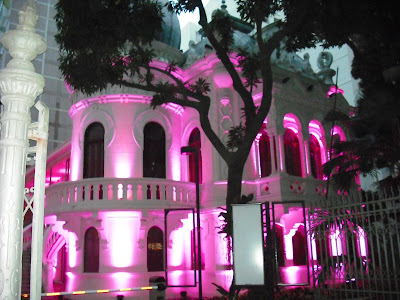 |
| Christ the Redeemer on its own. This is a non-selfie stick trip. |
It was a short climb up some stairs to the base of the 38-metre tall Christ the Redeemer, which took five years to build and was completed in 1931. It’s listed as one of the New Seven Wonders of the World.
I’d seen the statue from a distance on my way into Rio from the airport the day before and it looked small. Even standing in front of it, amidst a sea of selfie-takers, it wasn’t as large as I had envisioned.
It was still impressive, but not as impressive as the panoramic views offered from all sides of the statue. I could see all of the areas I walked the previous day, and much, much more. It was definitely worth the price. I spent an hour taking in all of the vistas while enjoying the sunshine and fresh air.
After taking the first shuttle down to Paneiras, I spent another half-hour in a former hotel that’s been converted into an interpretive centre that tells the story and emphasizes the importance of the Tijuca Forest, which Corcovado is part of. Tijuca National Park encompasses 3,953 hectares and is a UNESCO World Heritage Site.
I returned back to Largo do Mochado and travelled another two stops on the Metro to Botafogo, where I caught the 513 bus to Urca. There’s a cable car that goes from ground level up to Morro da Urca and another one that takes you to the 396-metre summit of Sugarloaf. The return trip cost is R$60. There’s another way up to Morro da Urca, however, and I opted to use it since it was free and better for me.
 |
| Urca Beach |
 |
| A rogue marmoset. |
The cable car holds 65 people, can travel at a speed of up to 36 kilometres per hour, and takes three minutes to complete its journey. The views were pretty much non-existent by this point, so that wasn’t money well spent. And by the time I took the cable car down to Morro da Urca, the fog had settled lower and spoiled the sightseeing from there as well. So I apologize for the lack of breathtaking photos.
At least I didn’t spring for a helicopter ride, which ranged in price from R$230 (about $92 Canadian) for five minutes to R$1,860 (about $744 Canadian) for an hour per person.
 |
| A view of Sugarloaf from Botafogo Beach after the fog lifted and the sun was starting to go down. |
 |
| I don't know the purpose of this building in Flamengo, but I liked the architecture and the lighting. |











